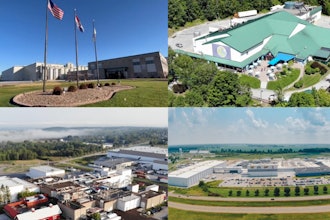Adopting a puppy has the ability to make one think about the importance of training, and the costs of not training—a high-speed bird chase through the woods, an annihilated gaming controller, a chewed up cell phone. Granted, each of those things only happened once, but once was enough to reinforce the fact that I was in charge of teaching her how things worked—and which things are not edible. I’d like to think the learning curve wasn’t terribly steep—by the time I adopted my second Springer Spaniel (again, as a puppy), I knew how tempting a treat the television remote was to a puppy. Unfortunately, my first dog—normally so grown-up (when compared to a six month old puppy)—was still tempted. I currently don’t own a television remote, so maybe that learning curve was a bit steeper than I thought.
I’ve heard time and time again how critical a successful training program is in the industry—and the cost of an untrained worker might just be a bit higher than a masticated remote. Lost production time, workplace injuries, and inefficient (or possibly just plain wrong and unsafe) work practices can all contribute to the cost of an untrained worker.
And as industrial manufacturing becomes more and more technical—and low value-added manufacturing jobs move overseas or become automated—training is becoming more important than ever before. There are approximately 600,000 U.S. manufacturing jobs open right now, according to a recent Deloitte report, because U.S. manufacturers can’t find the skilled workers to fill those jobs. While some might see that as a great problem for the U.S. to have—American manufacturing is continuing to grow and open up new job opportunities—that’s a problem that has no quick fix.
In America, there will be no sustainable recovery in the manufacturing sector without the right training programs to teach the necessary skills. Without cultivating the right talent right here in the U.S., those jobs will remain unfilled, and may eventually move overseas as well. Or U.S. manufacturers will look to other ways to accomplish integral business functions—outsourcing, automating processes, or looking to suppliers and vendors to provide more service-oriented offerings so that manufacturers can cut down their own workforce.
Training is also an integral part of a world class safety culture. And, unfortunately, I’ve seen a number of businesses cut down on safety training as a result of the economic downturn. The benefits of a safe working environment are immeasurable—increased productivity, fewer workplace accidents, reliable and safe processes that everyone understands, and employee morale are all byproducts of a well-trained, safe, and dynamic workforce. For the long-term health of any business, safety training is integral.
I actually can’t think of anyplace where safety, and its associated training, is not important. And that training can come in a variety of formats—online long-distance learning, classroom training, obedience classes—there are multiple options available to meet almost any objectives, and cost and time constraints.
I mentioned a number of manufacturers that I’ve seen trim down their safety focus, but I’ve also seen many put successful training programs in place—with dedicated management and an engaged workforce that is continually looking to improve in every aspect of their business, safety not withstanding. Training is a never ending source of development, and provides a way to continuously maintain and upgrade skills.
The ever increasing complexity in the world of manufacturing necessitates constant training, and the puppy running away with my shoe needs some more work too, I guess. I’m sure—with some training—that I can teach her not to eat it.
How is training, or lack thereof, affecting your business? Let me know at [email protected].






















